When it comes to luxury timepieces, few names command the same level of respect and admiration as Rolex. Within the vast realm of Rolex watches, one particular model stands out for its distinctive and captivating design – the Rolex Pepsi. This iconic timepiece has a rich history dating back to 1954, making it a true legend in the world of horology. In this article, we will delve into the fascinating history of the Rolex Pepsi, exploring its origins, evolution, and enduring appeal.
How did the Rolex Pepsi come to be?
The story of the Rolex Pepsi began in 1954 with the introduction of the Rolex GMT-Master reference 6542. At the time, the world was witnessing a surge in transcontinental flights, and there was a growing need for a wristwatch that could cater to the requirements of both travelers and pilots. Rolex responded to this demand by creating the GMT watch, designed to display two time zones simultaneously.
However, it wasn't until 1964, in the iconic James Bond movie "Goldfinger," that the Rolex Pepsi made its grand entrance into the world of luxury watches. In this film, the GMT-Master was adorned with a red and blue bezel, instantly capturing the attention of watch enthusiasts and cementing its status as an iconic timepiece.
Why is the Rolex Pepsi worth the investment?
The Rolex Pepsi GMT is undoubtedly one of the most recognizable and sought-after watches globally, and its enduring appeal can be attributed to its rich history and exceptional design. Launched in 1954, it was originally commissioned by Pan American Airways, whose signature colors of blue and red served as the inspiration for the iconic Pepsi bezel.
For watch enthusiasts and connoisseurs, the Rolex Pepsi's distinctive blue and red bezel holds a special significance as it symbolizes the division between day and night, a crucial feature for frequent travelers and pilots. Throughout its six-decade history, the Rolex Pepsi has undergone numerous updates, but it has always retained its striking and iconic colorway.
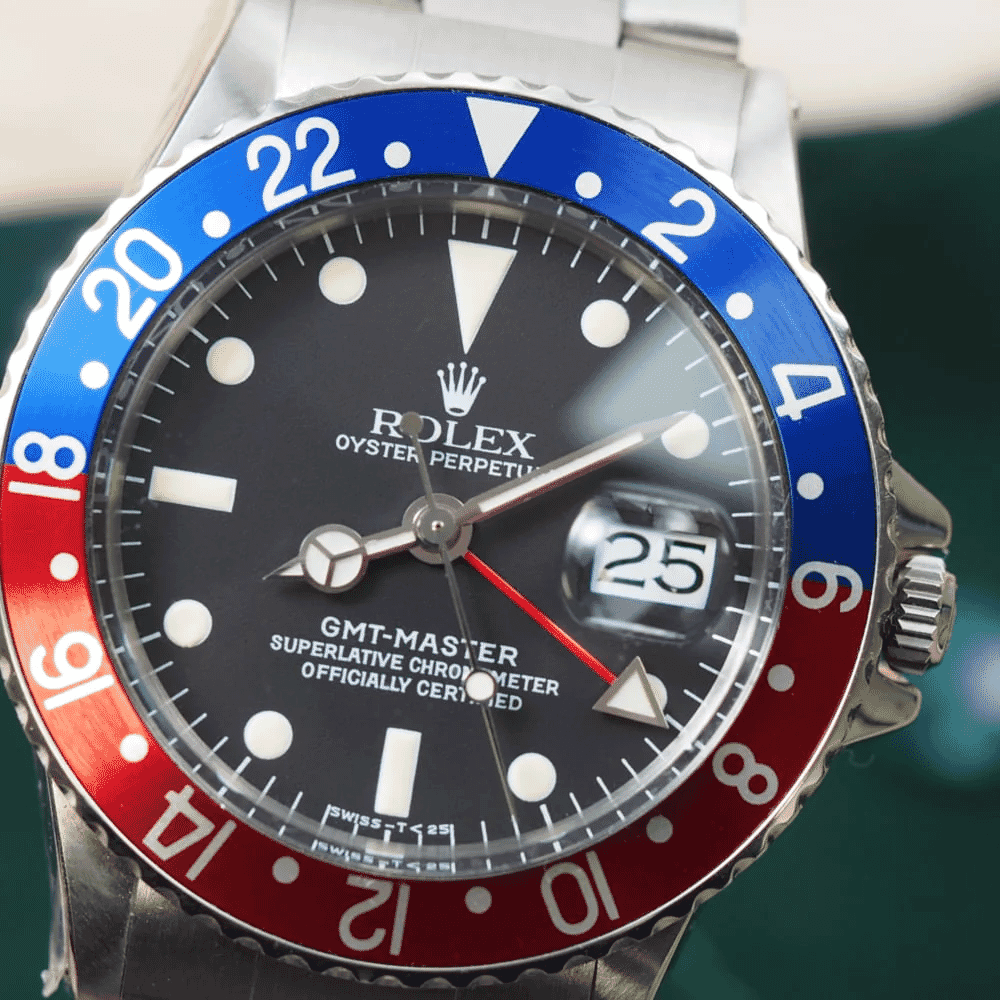
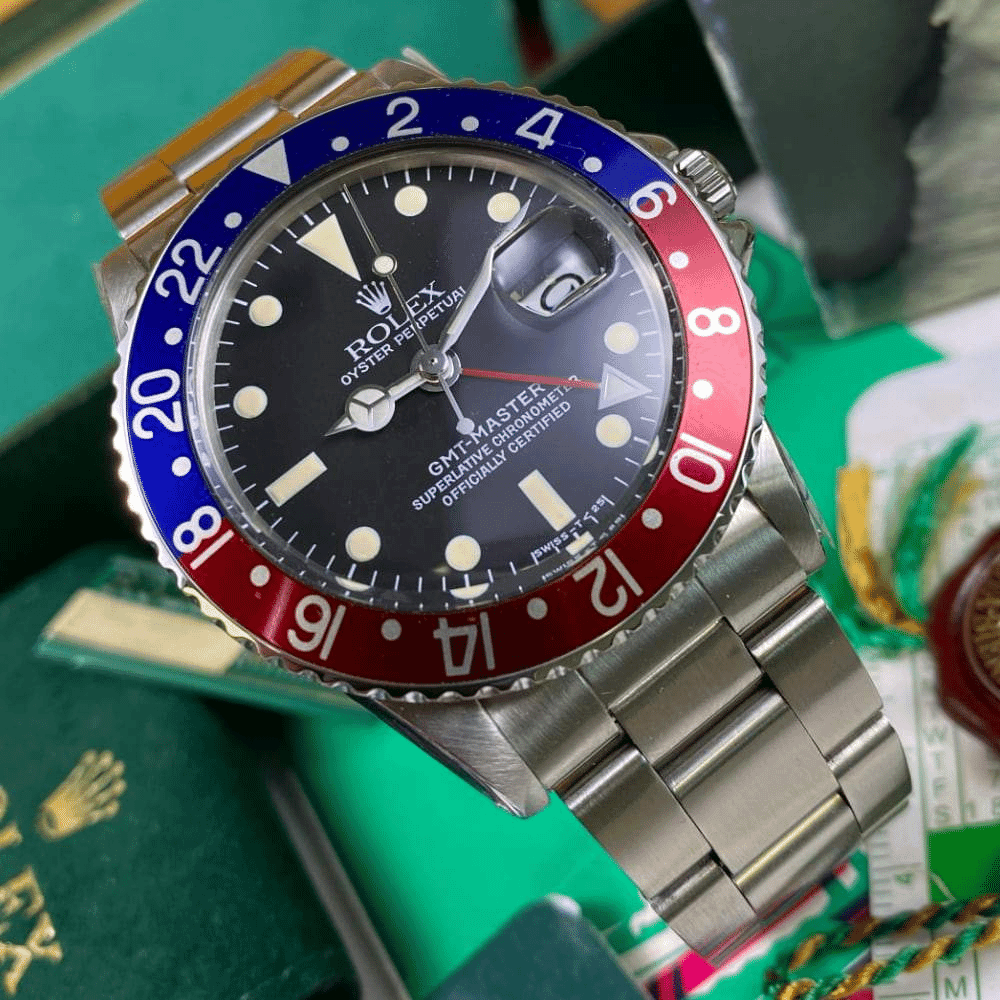
What are the most popular Rolex Pepsi models?
Ref 1675 (1959 – 1980)
In 1959, Rolex introduced the second model in the GMT-Master collection, the reference 1675. This model remained in production until 1980, making it one of the longest-running Rolex watches in history. Throughout its production run, Rolex implemented several updates, including changes to the hour hand design, crown guards, dials, and bracelet options. Finding a well-preserved reference 1675 is still possible, making it a beloved choice among vintage Rolex collectors.
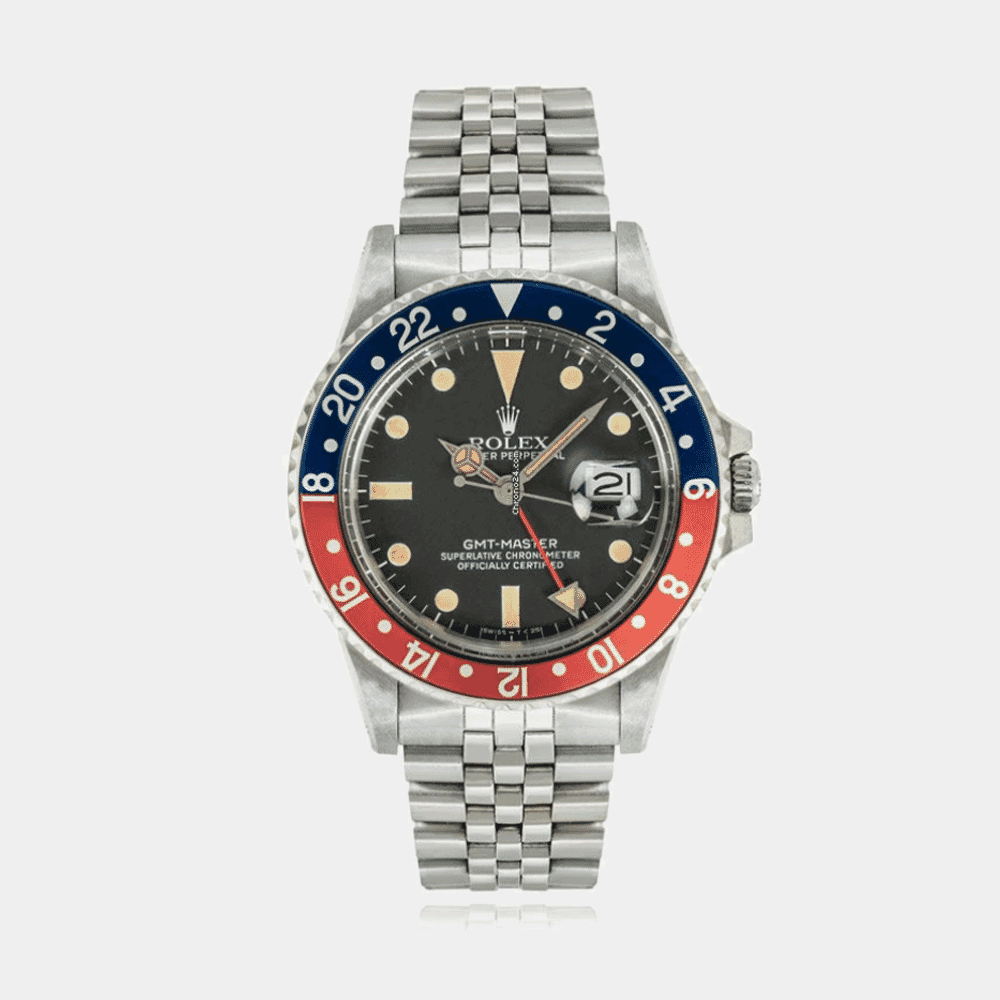
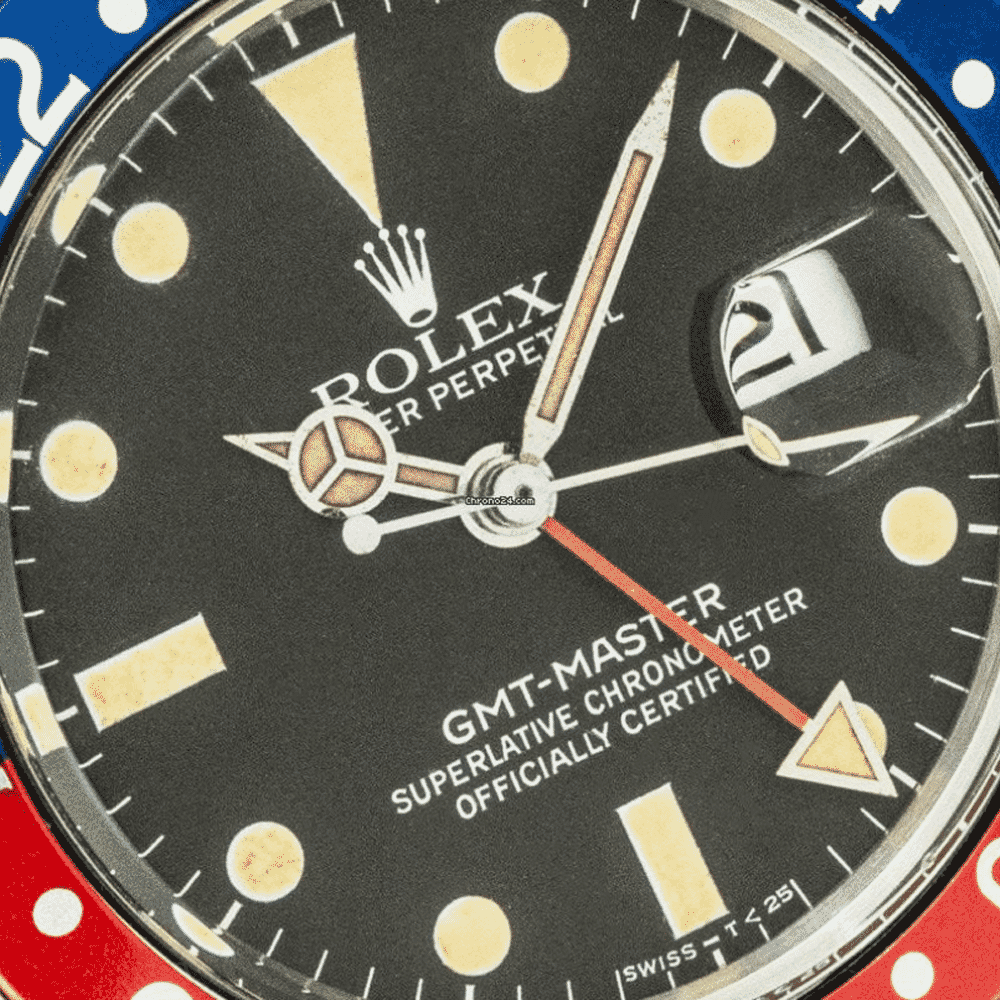
Ref 16750 (1981 – 1988)
After two decades, Rolex replaced the reference 1675 with the reference 16750 in 1981. This new model featured an upgraded caliber 3075 movement, incorporating a quickset date function and the innovative hacking feature, which stops the seconds hand when the crown is pulled out for precise time setting. Furthermore, the water resistance rating was doubled to 100 meters, enhancing the watch's durability. The reference 16750 is often considered a transitional model leading to the Rolex GMT-Master II and was produced for seven years.
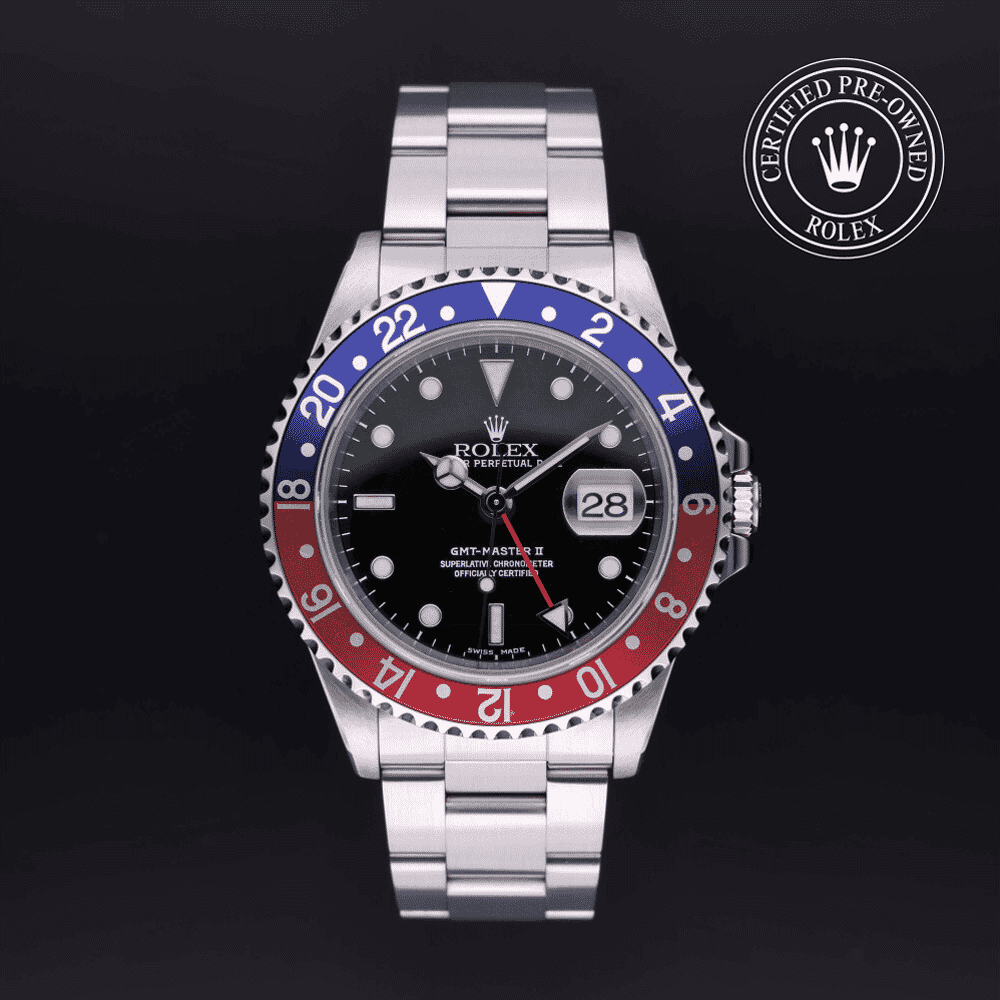
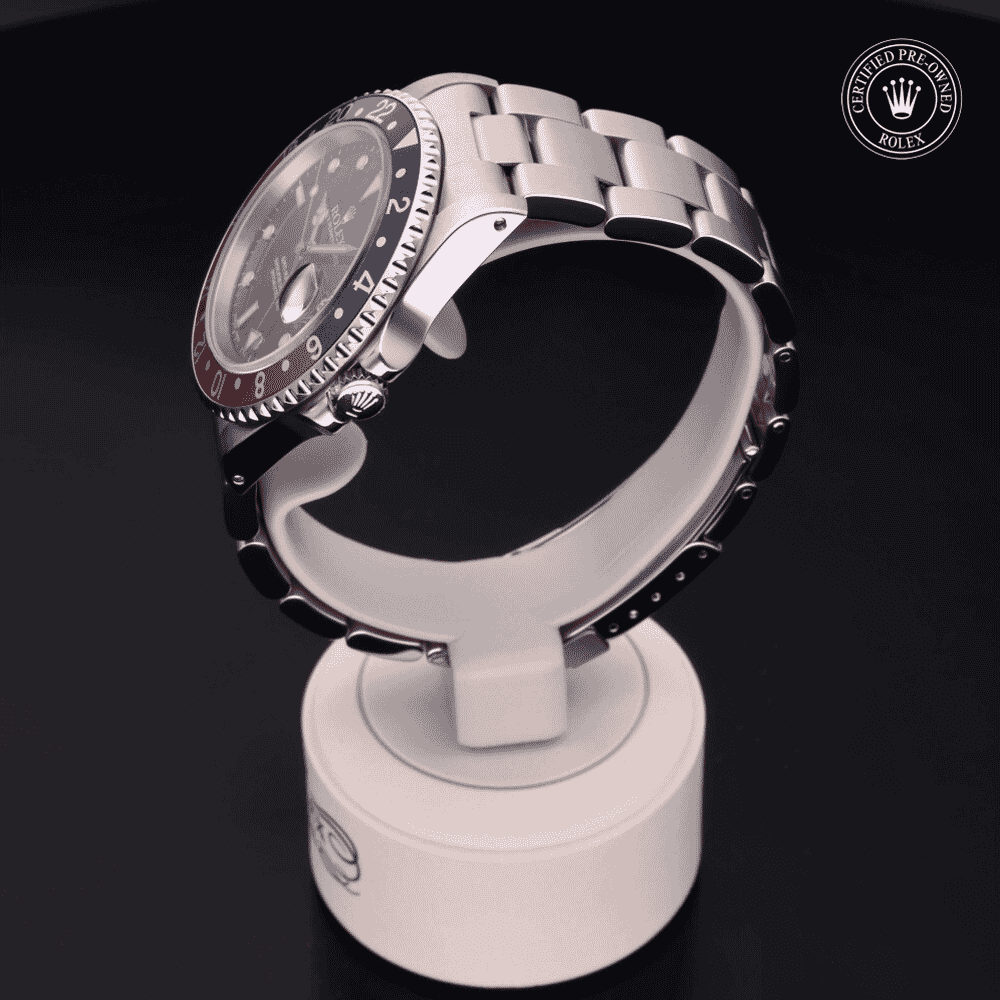
Ref 16700 / 16710 (1988 – 2007)
The introduction of the GMT-Master II in 1982 marked a significant milestone for Rolex. The initial GMT-Master II reference, the 16760, was famously known as the "Fat Lady" due to its thicker case. However, Rolex continued to produce the GMT-Master with the reference 16700 alongside the GMT-Master II until 1999. The reference 16700 featured the caliber 3175, which was Rolex's last "fixed" GMT movement. It was with the second edition of the GMT-Master II, the reference 16710, that the beloved Pepsi colorway made its return. This model also introduced the ability to independently adjust the GMT and hour hands, allowing for a third time zone display.
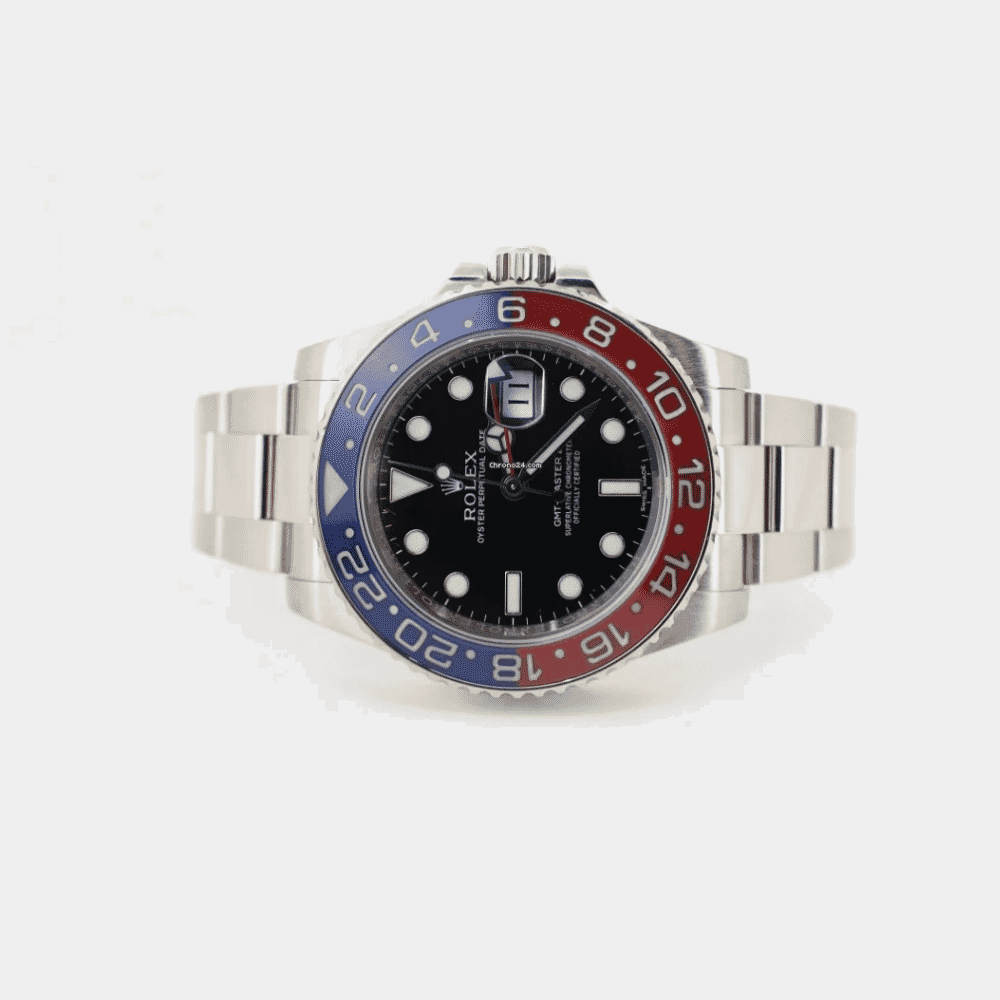

Ref 116719 BLRO (2014 – 2018)
In 2005, Rolex commemorated the 50th anniversary of the GMT-Master II by introducing the "Super Case" and Cerachrom ceramic bezel. Initially available in all-black, known as the "Batman," Rolex enthusiasts eagerly awaited the return of the iconic Pepsi colorway. In 2014, Rolex fulfilled their wishes, albeit with a twist. The new Pepsi model was crafted from 18k white gold, adding a touch of luxury to its already illustrious history. The timepiece also received upgrades, including the Triplock crown system and the Caliber 3186 movement, with a blue Parachrom hairspring for improved durability.

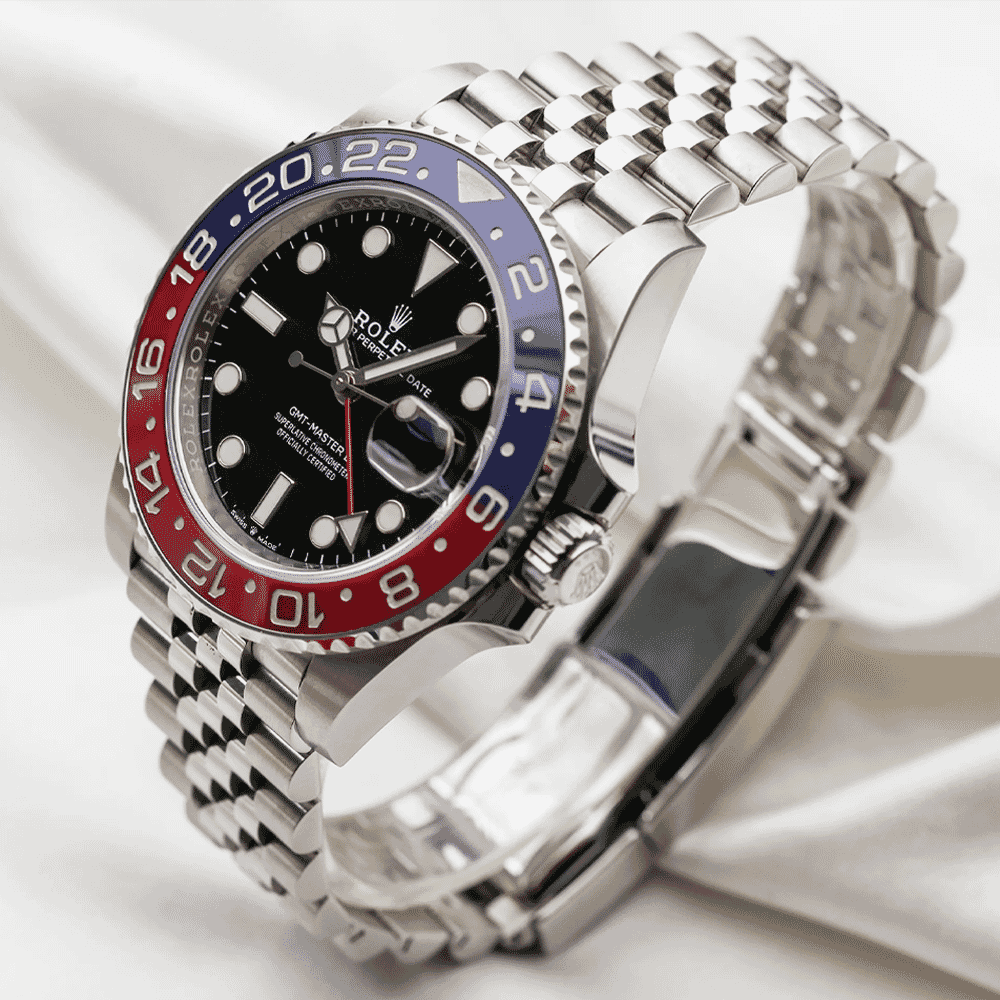
Ref 126710 BLRO (2018 – )
Finally, in 2018, Rolex enthusiasts received the modern Rolex Pepsi they had been longing for, this time in stainless steel. This reintroduced the Pepsi to its sport watch roots, while also upgrading the movement to the Caliber 3285. This new-generation movement offers a generous 70 hours of power reserve, increased from 50, and boasts a precision of +2 / -2 seconds per day. The ref 126710 closely resembles its white gold counterpart, with the notable addition of a Jubilee bracelet, specifically designed for this model. Rolex also announced that all future stainless steel GMT-Master II versions will feature Jubilee bracelets, marking a significant shift in the collection's design.
Up next, investment Rolex watches to consider now.




